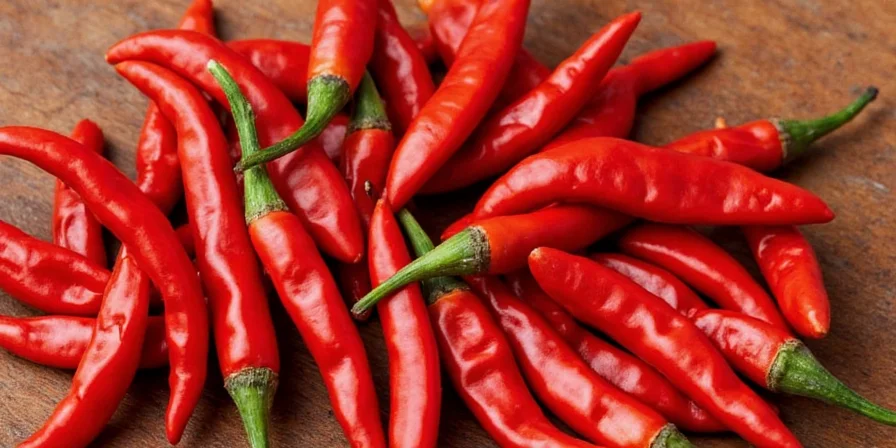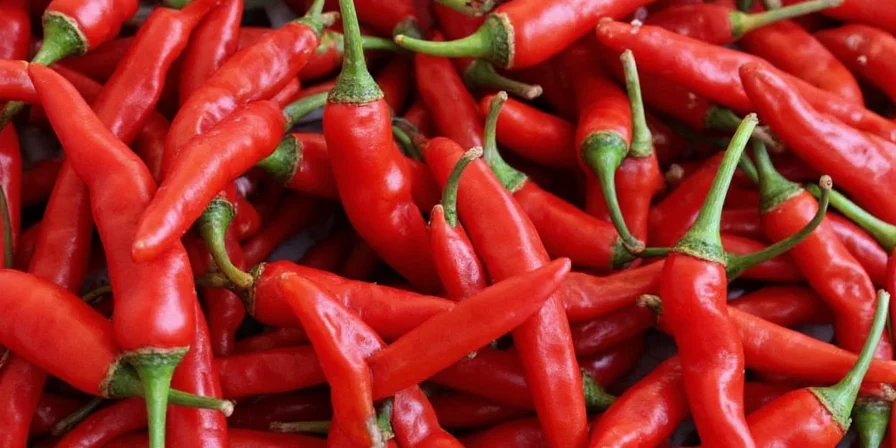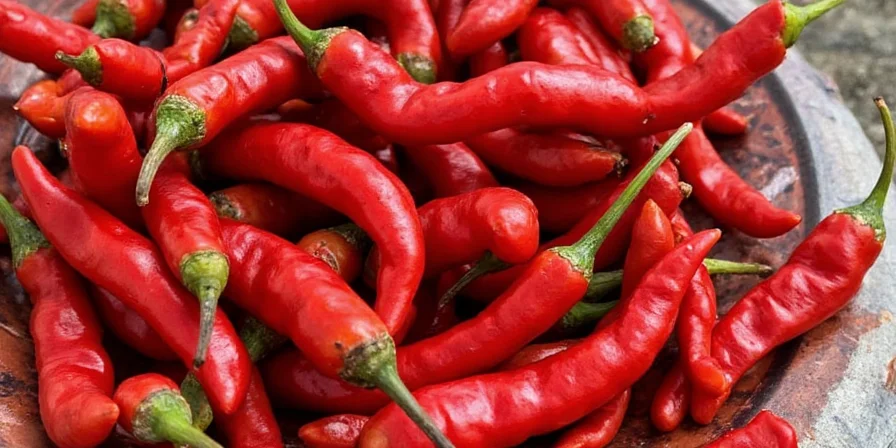Table of Contents
- Introduction to Guajillo Chilis
- Historical Roots: Mesoamerican Origins and Cultural Evolution
- Regional Variations: How Mexican States Use Guajillo Chilis
- Flavor Chemistry: Beyond Heat to Fruity Complexity
- Global Culinary Innovation Beyond Traditional Mole
- Precise Heat Measurement: Scoville Scale Context
- Advanced Preparation Techniques for Flavor Maximization
- Scientific Pairing Principles: Flavor Compound Synergy
- Long-Term Preservation: Preventing Flavor Degradation
- Authenticity Verification: Identifying Premium Quality
- Unexpected Fusion Applications in Modern Cuisine
- Integrating Guajillo Chilis into Contemporary Cooking
- Frequently Asked Questions
Introduction to Guajillo Chilis
Guajillo chilis (Capsicum annuum) represent far more than a simple spice—they're a flavor catalyst with biochemical complexity unmatched in the dried chili spectrum. Unlike single-note peppers, guajillos deliver layered sensory experiences through unique volatile compounds activated during specific preparation methods. This guide explores their transformative potential for home chefs seeking restaurant-quality depth without overwhelming heat.

Historical Roots: Mesoamerican Origins and Cultural Evolution
Archaeobotanical evidence confirms guajillo cultivation in Mesoamerica dating to 6000 BCE. Unlike popular misconception, Aztec use of chilis in cacao beverages primarily involved smaller, hotter varieties like chiltepín—not guajillos. Guajillo's prominence emerged later through Spanish colonial trade routes that distributed seeds globally while indigenous communities preserved traditional drying techniques. Their name derives from "guaja," Nahuatl for berry, reflecting the fruit's characteristic plumpness when ripe.
Regional Variations: How Mexican States Use Guajillo Chilis
Guajillo applications vary dramatically across Mexico's culinary regions:
- Puebla: Essential for mole poblano's brick-red hue and berry undertones
- Jalisco: Blended with vinegar for tangy birria marinades
- Oaxaca: Combined with hoja santa in complex recados
- Nuevo León: Used in cabrito (roast kid) sauces for subtle sweetness
- Yucatán: Paired with achiote for cochinita pibil's earthy depth
Flavor Chemistry: Beyond Heat to Fruity Complexity
Guajillos contain 37 identifiable flavor compounds including methyl anthranilate (grape), vanillin (vanilla), and eugenol (clove). This creates a flavor profile distinct from other dried chilis:
| Compound Category | Specific Compounds | Sensory Impact |
|---|---|---|
| Fruity Esters | Methyl anthranilate, ethyl caproate | Raisin/tamarind notes |
| Phenolic Aldehydes | Vanillin, eugenol | Leathery depth without smokiness |
| Terpenes | Linalool, geraniol | Floral brightness |
| Heat Profile | Capsaicinoids (0.1-0.25%) | Gradual warmth peaking at 90 seconds |

Global Culinary Innovation Beyond Traditional Mole
Chefs globally now leverage guajillos' unique solubility profile:
- Japanese ramen broths (replaces black pepper)
- Scandinavian gravlax glazes (with aquavit infusion)
- Peruvian anticuchos (marinade base for heart skewers)
- Korean gochujang alternative (fermented paste variation)
- Moroccan tagines (replaces paprika in lamb dishes)
Precise Heat Measurement: Scoville Scale Context
Guajillo's 2,500–5,000 Scoville units place it in the moderate tier, but heat perception varies significantly based on preparation:
- Seeds removed: 1,200–2,000 units (mild)
- Seeds included: 4,000–6,500 units (medium)
- Oil infusion: Concentrates capsaicin to 7,000+ units
This variability explains why guajillos feel milder in sauces than expected—their heat activates later in the tasting process.
Advanced Preparation Techniques for Flavor Maximization
Professional results require precise temperature control:
- Steam-toasting: 15 seconds steam followed by 60 seconds dry heat (170°C) maximizes ester development
- Acid-activated rehydration: Soak in 5% vinegar solution (not water) for 8 minutes
- Emulsification: Blend with 10% avocado oil for stable sauces
- Layering: Add early for base flavor, late for brightness
- Temperature threshold: Never exceed 190°C during cooking to prevent bitterness
Scientific Pairing Principles: Flavor Compound Synergy
Guajillos interact predictably with other ingredients based on molecular compatibility:
- Calcium-rich foods: Dairy neutralizes heat but masks fruit notes (use sparingly)
- Acidic components: Lime juice enhances methyl anthranilate (grape notes)
- Sulfurous vegetables: Onions amplify earthy undertones
- Fermented elements: Fish sauce intensifies umami without overpowering
- Alcohol: Tequila extracts flavor compounds more effectively than water
Long-Term Preservation: Preventing Flavor Degradation
Light and oxygen cause rapid degradation of guajillo's volatile compounds. For maximum shelf life:
- Store in amber glass containers with oxygen absorbers
- Keep at 10–13°C (wine cellar temperature ideal)
- Whole chilis last 14 months; powder degrades in 4 months
- Freeze rehydrated paste in ice cube trays (6-month stability)
Authenticity Verification: Identifying Premium Quality
Distinguishing authentic guajillos from substitutes requires sensory analysis:
| Characteristic | Authentic Guajillo | Common Substitutes |
|---|---|---|
| Color | Bright brick-red (no orange tones) | Dull red or brownish (ancho) |
| Texture | Smooth, leathery skin | Papery or brittle (pasilla) |
| Aroma | Distinct berry-vanilla scent | Smoky (chipotle) or raisin-like (mulato) |
| Stem | Thin, straight, dark green | Thick or curved (chiles de árbol) |
Unexpected Fusion Applications in Modern Cuisine
Contemporary chefs exploit guajillo's unique solubility properties:
- Guajillo-Infused Chocolate: 70% dark chocolate with rehydrated chilis (heat activates chocolate's theobromine)
- Umami Broth Boost: Simmer with dried shiitakes for vegetarian dashi alternative
- Pastry Glaze: Pureed with apricot jam for sweet applications
- Cocktail Bitters: Steeped in high-proof spirits for complex bitterness
- Smoked Fish Rub: Combined with brown sugar for salmon
Integrating Guajillo Chilis into Contemporary Cooking
Guajillo chilis offer unparalleled versatility through their balanced heat-to-flavor ratio and unique compound profile. By understanding their biochemical properties—particularly how preparation methods activate specific flavor compounds—cooks can achieve restaurant-quality complexity at home. Their true value lies not in heat intensity but in the multidimensional flavor foundation they provide, making them indispensable for creating dishes with layered depth that evolves through the tasting experience. As culinary boundaries continue dissolving, guajillos stand poised to become the universal flavor bridge between traditional and innovative cooking techniques.











 浙公网安备
33010002000092号
浙公网安备
33010002000092号 浙B2-20120091-4
浙B2-20120091-4